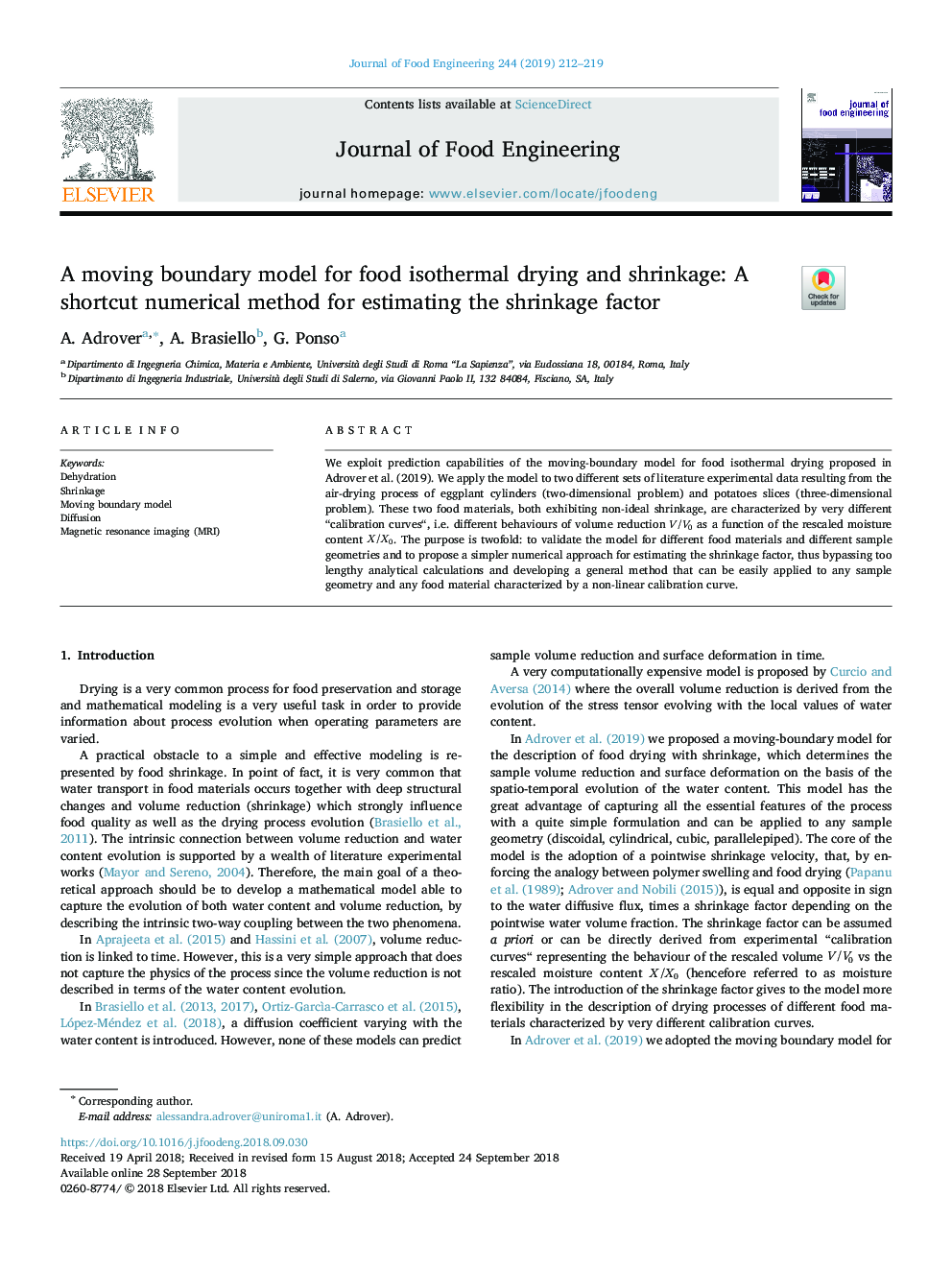| Article ID | Journal | Published Year | Pages | File Type |
|---|---|---|---|---|
| 11024368 | Journal of Food Engineering | 2019 | 8 Pages |
Abstract
We exploit prediction capabilities of the moving-boundary model for food isothermal drying proposed in Adrover et al. (2019). We apply the model to two different sets of literature experimental data resulting from the air-drying process of eggplant cylinders (two-dimensional problem) and potatoes slices (three-dimensional problem). These two food materials, both exhibiting non-ideal shrinkage, are characterized by very different “calibration curves“, i.e. different behaviours of volume reduction V/V0 as a function of the rescaled moisture content X/X0. The purpose is twofold: to validate the model for different food materials and different sample geometries and to propose a simpler numerical approach for estimating the shrinkage factor, thus bypassing too lengthy analytical calculations and developing a general method that can be easily applied to any sample geometry and any food material characterized by a non-linear calibration curve.
Related Topics
Physical Sciences and Engineering
Chemical Engineering
Chemical Engineering (General)
Authors
A. Adrover, A. Brasiello, G. Ponso,
